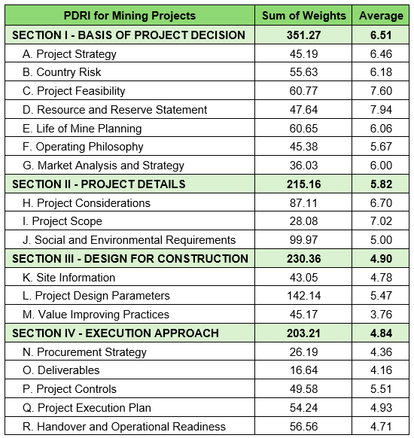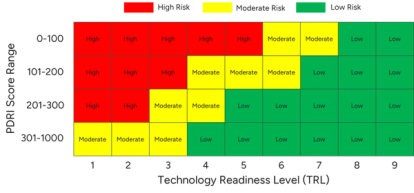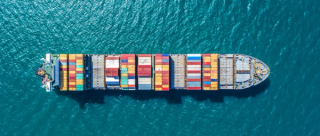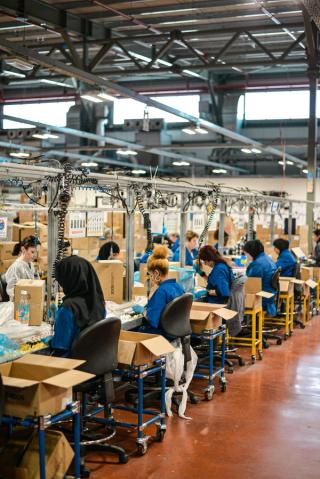
Leveraging ecologists in land development: What their expertise can bring to ESC and landscape architecture
by Kim Logan
View post

Mining of critical metals is expected to see significant growth demand, due to geopolitical factors, trade tariffs, protectionism, and a renewed interest in domestic and downstream metals processing. However, project execution in metals and mining has historically been poor and mining projects have systematically underperformed.[1] According to a recent McKinsey article, cost and scheduling challenges have affected more than 80% of recent major mining and metals projects.[2]
In the high-stakes world of mining, where capital intensity meets geological uncertainty, project success hinges on two critical factors: clarity of scope and maturity of technology. Yet, these are often treated in isolation. What if we could integrate two powerful methodologies: Project Definition Rating Index (PDRI) and Technology Readiness Level (TRL), to create a unified framework for de-risking mining investments?
PDRI, developed by the Construction Industry Institute (CII), is a powerful and structured tool that assesses the completeness of project scope definition. It helps project teams identify gaps early, prioritize planning efforts, and improve predictability in cost, schedule, and performance.
The PDRI is intended for use during front end planning (FEP), the project phase that encompasses activities such as feasibility, concept, and detailed scope definition (see Figure 1). The first task is to identify the key standard deliverables in each of the project’s design work stages to confirm the maturity of the scope.

Source: CII
PDRI – FR-366, Specific for Mining Projects consists of a standardized, comprehensive checklist of 180 scope definition elements in an easy-to-use score sheet format that is divided into four sections and 18 categories. Table 1 shows the total and average weights allocated to each section and category.

Source: CII
Each element is assigned a weight based on its impact on project success. During assessment, team members score each element from 0 to 5, where: 1 = well defined, 5 = poorly defined or missing. The scores are multiplied by their respective weights and summed to produce a total PDRI score, typically ranging from 0 to 1000.
Lower scores indicate better scope clarity and readiness for execution. A PDRI score of 200 or less has been shown to greatly increase the probability of a successful project. The PDRI score can be tracked over time to monitor planning progress and used as a gate criterion for project phase approvals.
TRL, originally developed by NASA and widely adopted across industries, evaluates the maturity of technology from concept (TRL 1) to full deployment (TRL 9). The TRL Assessment Tool groups nine technology readiness levels into four technology development stages:
The tool provides a description of each TRL along with a checklist to determine if the technology is at that specific TRL. For a detailed breakdown of TRL definitions and checklists, refer to the Government of Canada TRL Assessment Tool. [3] If there are uncertainties as to whether a technology is at a certain TRL, then the lower TRL should be assigned. An important principle in guiding TRL determination is to be clear in understanding how the testing environment represents real-world conditions in deployment. It is particularly useful in mining, where emerging technologies, such as ore sorting, autonomous haulage, or novel processing methods can make or break a project.
When used together, PDRI and TRL offer a dual-lens view: one focused on project scope and the other on technology maturity. This integration is especially valuable in mining, where innovation is increasingly central to competitiveness, sustainability, and safety.
Mining projects are uniquely complex:
By combining PDRI and TRL, mining companies can:
Here’s how mining companies can undertake this integration:

In an era where mining must be more agile, sustainable, and capital-efficient, integrating PDRI and TRL is not just a best practice, it is a strategic imperative. The use of dual readiness indicators (PDRI and TRL) can help to improve investment confidence. By bridging the gap between what we know (scope) and what we can do (technology), mining leaders can make smarter decisions, reduce surprises, and deliver projects that are both innovative and executable.
SLR has a dedicated mining advisory team of over 230 professionals globally, providing leading scientific and engineering solutions for mining projects. Among the 230 professionals, there are subject matter experts in all technical areas, e.g., Geology, Mining, Metallurgy and Processing, Tailings, Geoscience, etc. We have expertise in applying PDRI and TRL methodologies and can assist clients in the mining sector align technology decisions with project readiness and prioritize planning based on technology maturity.
Contact us to discuss furtherReferences:
[1]Mulder, H. and Bekker, M.C. 2022. A review of readiness assessments for mining projects. Journal of the Southern African Institute of Mining and Metallurgy, Vol. 122, No. 7, pp. 377-386.
[2] McKinsey & Company. 2024. The capex crystal ball: Beating the odds in mining project delivery. November 2024.
[3] Government of Canada. 2025. https://ised-isde.canada.ca/site/clean-growth-hub/en/technology-readiness-level-trl-assessment-tool. Accessed: June 5, 2025.

by Kim Logan

by Michelle Gluck, Graeme Precious

by Jessica Barua